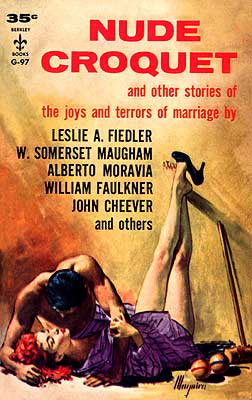
For our last "quick hit" regarding Warren Hill School (1885-1936) in Meads, Eastbourne, we'll take one last look at some of the exterior of the building that's visible but not prominent.
Last time we looked at the difference between a probably-just-before-the-turn-of-the-20th-century image of the school and compared the southwest corner of the building with a photograph taken circa 1930. In addition to providing a possible location of the "new" library, the opposite end of the former photograph mentioned above also seems to provide a location of the school's gardens.
In the promotional leaflet written by Bertram George de Glanville sometime in the mid-1930s, he states: "There is a large kitchen garden which supplies fresh fruit and vegetables for the School. Boys may, if they like, have small gardens of their own."

On the 1930 map and plan [above], the eastern facade of Warren Hill creates a "C" shape with an interior space that is not a part of the main building's foundation.
In the pre-1900 photograph [below], we see what appears to be a large green-house/conservatory structure extending a few yeards eastward of the school itself. This glass structure would have received morning sun entirely, and the portion of it extending past the building's southeast wall would have enjoyed southern exposure for much of the day.

Due to the substantial growth of a tree line, we cannot see it in the circa-1930 image, but according to de Glanville's brochure, this glassed arboretum must have remained.
Does a garden on that eastern side of the school imply it would have been near the kitchen, and the kitchen near the great room in which the boys and masters would have dined? If so, it would relegate the actual gymnasium to the other (west) side of the school as it seems unlikely that it would have been just inside the front door. Indeed, the western wing of Warren Hill is half-again as large as the eastern portion of the main building on the 1930 plan, implying the possibility of ample room for a gymnasium.

We do have another image of part of that eastern façade of Warren Hill [above]. It is taken from a post card (provided by the Eastbourne Local History Society) that was probably captured not long after the school was built in 1885.
The institution towers above seemingly everything from the high ground there, and we can see a slanted roof protruding from the façade to the left. That would mark the southern part of the "C"-shape we see on the 1930 map.
However, there is no corresponding protrusion to the right, the northern corner of the main building, below the turret/tower. Whatever was built there, at the northeast corner of the building was not part of the original structure of the school.
 de Glanville's leaflet states: "There is a capacious sick wing which has its own kitchens, bathrooms, etc., and can be completely isolated from the main building in case of need."
de Glanville's leaflet states: "There is a capacious sick wing which has its own kitchens, bathrooms, etc., and can be completely isolated from the main building in case of need."Being near what we might assume to be the main kitchen, this addition clearly could have tapped easily into existing plumbing to construct a sick wing kitchen and bath. Given that visions of the epidemic of Spanish influenza less than a dozen years before still were established in the public's consciousness [flu patients receiving treatment, right], the availability of a facility to provide not only a comfortable respite for the ailing, but also protection for those not afflicted, would have been quite a selling point for the school.
The real question about all of this: Is my speculation correct? Time hopefully will tell.
Pieces of the proverbial puzzle continue to metaphorically fall into place regarding Warren Hill. Additional photographs taken on the grounds—whether or not they depict characters in the saga of George Mills—or of a "war memorial" that is distinct from the school's memorial library—would increase our knowledge even more.
Once again, if you have images, memories, or information regarding the history of Warren Hill School in Meads, please don't hesitate to let me know—and thanks!


![Meredith and Co. [1933] by George Mills](https://blogger.googleusercontent.com/img/b/R29vZ2xl/AVvXsEjlUeRNPnH8Xd8JT59QdtabQHRI6DI6Hqew57i6qixjOL3LjgUD9g22o3-wNlmBya36D5-6KZXX-sxLnktAfEqjlvTmdwyiIL2K6VHOGW2Wq9Pe8_oFGknENfVE1Xrkdj0b8FYXTz_6SMg/s1600-r/sm_meredith_1933.JPG)
![King Willow [1938] by George Mills](https://blogger.googleusercontent.com/img/b/R29vZ2xl/AVvXsEgiz_iaQjinIbVw6yQ-W4hwx6wGJwMQH9azCs3Qacp9eX627B7Eq9hMn1wlHLzlkbcflHRWM8VcPX-1uteKbs4LA5q5Oq69WhrnhzBQLjpseK_M34PSoOOhTZ96EfVAGFehG53gZ0M4EvU/s1600-r/sm_1938.JPG)
![Minor and Major [1939] by George Mills](https://blogger.googleusercontent.com/img/b/R29vZ2xl/AVvXsEgH5nj4Q6BNpzVEb1vyJeGV6ikuN4SFAyDa-jypIgbvdrxqcjHkNxqjrXH7ptZmge7oTTpn5QjAI0yCJPdI-fIzooCDD1TAA3RDxO9jzLcU3QOIhBWKiKNz6CPjCSTZgIPd9_4zM7LLpAw/s1600-r/sm_1939.JPG)
![Meredith and Co. [1950] by George Mills](https://blogger.googleusercontent.com/img/b/R29vZ2xl/AVvXsEgm_JPAXPpX0wb8bDkjYG67Sg1HePiPhRP6b9oUMWvkJhiW6XJzmxTQ7TBepfxpPgRrFNCRuumYRj-SAfU9Kw-uDsbO5HBtyxfQfClHVMJxJUkDpbkrCPhzpC4H_g_ctlirgnSla4vX1EQ/s1600-r/sm_1950.JPG)
![Meredith and Co. [1957?] by George Mills](https://blogger.googleusercontent.com/img/b/R29vZ2xl/AVvXsEg0zRm3-CCmA8r2RrBmrACDvmxJjoBjfxUoPI9yc6NWu1BZ3dd89ZvCixmmKZe1ma0QiDIrsDZNqf-8h1egh0JLiRYHagXAqQ1UknWPy6SksK76psYPcEMLGa_Aj7wo2vMFPo0aMdcx_pg/s1600-r/sm_meredith.JPG)













No comments:
Post a Comment